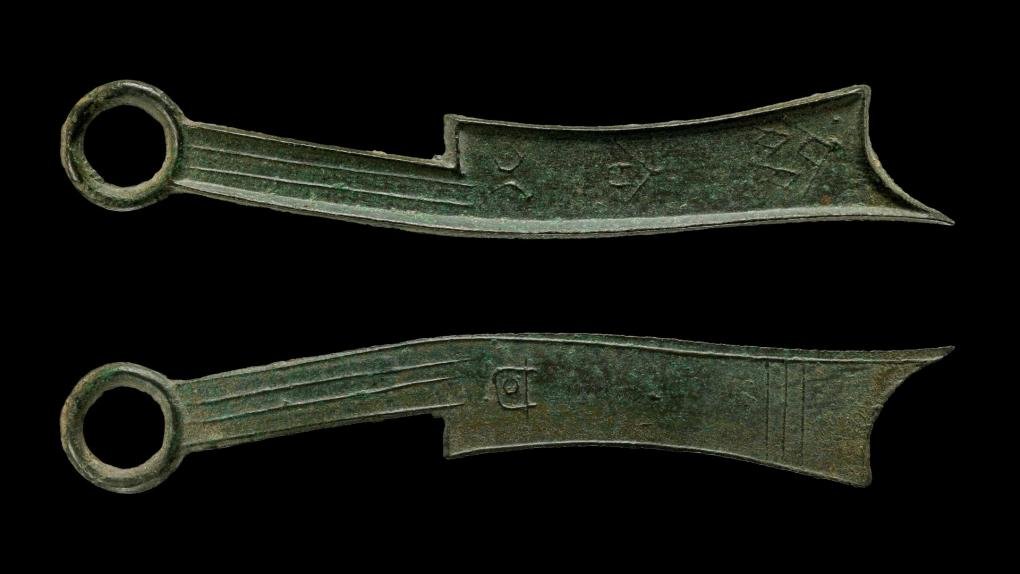The ingredients in chemistry formulas from a 2,300-year-old Chinese text, THE KAOGONG JI. (Book of Diverse Crafts), have been discovered by researchers, revealing that ancient metallurgy was more complex than previously thought.
 Knife coins used in ancient China around 400 BC, were analyzed in the study. Credit: The Trustees of the British Museum / CC-BY-SA 4.0
Knife coins used in ancient China around 400 BC, were analyzed in the study. Credit: The Trustees of the British Museum / CC-BY-SA 4.0
The text, known as the “oldest known technical encyclopedia,” was written in China around the middle of the first millennium BC and is known variously as the Record of Trades, Records of Examination of Craftsman, Book of Diverse Crafts, or Artificers’ Record. It details the methods used to make items such as swords and instruments, including six chemistry formulae for mixing bronze.
The translated text of the formula reads, “The jin is divided into six, tin occupies one. This is the receipt for bells and tripod-vessels. The jin is divided into five, tin occupies one. This is the receipt for axes and hatchets.”
In a study published in the journal Antiquity. a team from the University of Oxford believe they have identified Jin and Xi, previously considered to be copper and tin, two key components of bronze.
The discovery was made while studying the chemical composition of Chinese coinage from around the time of the writing of the Kaogong ji. The study indicating that the coins were made by diluting copper with tin and lead to create the ideal form of bronze by combining two pre-prepared metal alloys: a copper-tin-lead alloy and a copper-lead alloy.
Linguists and archaeologists of old Chinese technology will be interested in this finding.
“These recipes were used in the largest bronze industry in Eurasia during this period,” said Dr Ruiliang Liu from the British Museum in a news release.
“It indicates an additional step – the production of pre-prepared alloys – in the manufacturing process of copper-alloy objects in early China,” Dr Liu added, “This represents an additional but previously unknown layer in China’s web of metal production and supply.”
The researchers say their discovery allows a better understanding of ancient metalworking processes in China and shows how science can help in the resolution of historical and linguistic mysteries.
More information: A.M. Pollard et al, (2022). The six recipes of Zhou: a new perspective on Jin (金) and Xi (锡), Antiquity. DOI: 10.15184/aqy.2022.81





